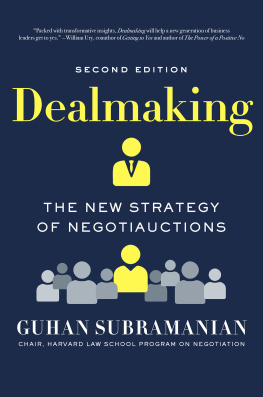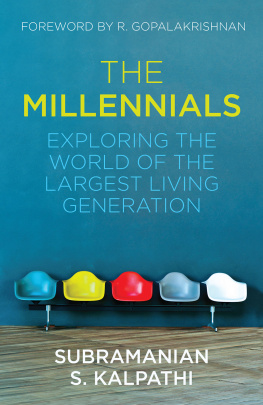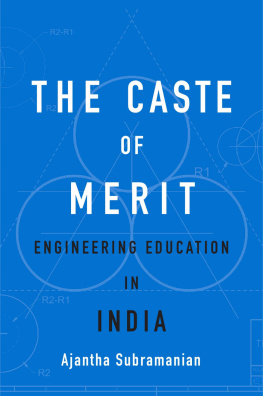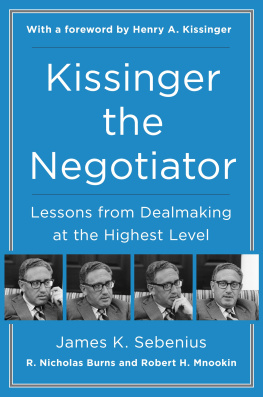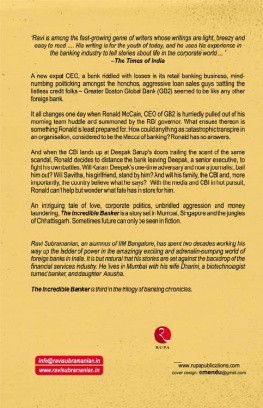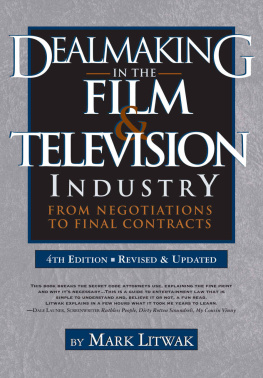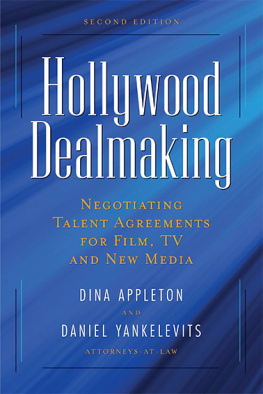Contents
Guide

DEAL MAKING
THE NEW STRATEGY OF NEGOTIAUCTIONS
SECOND EDITION
GUHAN SUBRAMANIAN

Copyright 2020, 2010 by Guhan Subramanian
Previous edition published under the title NEGOTIAUCTIONS: New Dealmaking Strategies for a Competitive Marketplace
All rights reserved
For information about permission to reproduce selections from this book, write to Permissions, W. W. Norton & Company, Inc., 500 Fifth Avenue, New York, NY 10110
For information about special discounts for bulk purchases, please contact W. W. Norton Special Sales at specialsales@wwnorton.com or 800-233-4830
Jacket design: Yang Kim
Jacket images: Shutterstock
The Library of Congress has cataloged the printed edition as follows:
Names: Subramanian, Guhan, author.
Title: Dealmaking : the new strategy of negotiauctions / Guhan Subramanian.
Description: Second edition. | New York, NY : W. W. Norton & Company, [2020] | Previous edition published under the title Negotiauctions: new dealmaking strategies for a competitive marketplaceTitle page verso. | Includes bibliographical references and index.
Identifiers: LCCN 2020016513 | ISBN 9780393358391 (hardcover) | ISBN 9780393541175 (epub)
Subjects: LCSH: Negotiation in business. | Auctions.
Classification: LCC HD58.6 .S83 2020 | DDC 658.4/052dc23
LC record available at https://lccn.loc.gov/2020016513
W. W. Norton & Company, Inc., 500 Fifth Avenue, New York, N.Y. 10110
www.wwnorton.com
W. W. Norton & Company Ltd., 15 Carlisle Street, London W1D 3BS
To Helen
In 1485, Christopher Columbus set out from the seacoast town of Palos, Spain, with a letter addressed to a friar who allegedly could get him in to see Queen Isabella of Castile and King Ferdinand of Aragon. After many hurdles and false starts, Columbus was finally able to present them with his audacious plan to sail west to India. The answer was a flat no. But Columbus was undeterred. He pitched his idea to the rulers in Genoa, Italy (his hometown); Portugal; the Republic of Venice; and England. All of them said no. He came back to Spain and waited for a change of heart. According to one account, The days grew into months, the months grew into years and still Columbus waited for the chance that did not come.
At last his chance came. In November 1491, Isabella summoned Columbus to her court in Granada, where her troops were fighting the Moors. This time, a full six years after their initial encounter, the queen agreed that Columbuss plan was worth trying.
Given the circumstances, one would think that Columbus would take whatever terms that the queen might offer. But instead, Columbus put a monstrous ask on the table: in exchange for his effort to find a new route to India, Columbus demanded a knighthood, appointment as grand admiral and viceroy, and 10 percent of all taxes levied in the New World. The queen kicked him out immediately.
Columbus was distraught, but not deterred. He got on a slow mule and headed off to play his last card: King Charles XIII of France. Here is one account of what happened next:
As Columbus rode off to find the French king, sick and tired of all his long and useless labor at the Spanish court, his few firm friends there saw that, unless they did something right away, all the glory and all the gain of this enterprise Columbus had taught them to believe in would be lost to Spain.
Call him back! [Isabella] said. I agree to his terms. If King Ferdinand cannot or will not take the risk, I, the queen, will do it all. Quick! do not let the man get into France. After him. Bring him back!
And without delay a royal messenger, mounted on a swift horse, was sent at full gallop to bring Columbus back.
And the rest, as they say, is (actual) history.
This interaction between Columbus and Isabella, undoubtedly one of the most consequential negotiations in human history, illustrates a foundational idea in this book. For six years, directly and through intermediaries, Columbus tried to achieve his goal using the traditional negotiation toolkit. He used tools of persuasion and influence; he offered the ultimate contingent contract (i.e., if he didnt fall off the edge of the earth, everyone would win big); and, once the queen bought the basic concept, he very aggressively maneuvered to anchor the negotiation to his advantage. But ultimately this toolkit led to an impasse.
What unlocked the situation was creating competition for the deal. And not just any competitionSpains archrival, France. It is not clear from the history books whether Isabella even knew of Columbuss outreaches to Italy, England, and Portugal; and even if she had known, it is not clear that this would have mattered. It was only when the possibility loomed that her archrival would get the dealFrance!that the Spanish queen jolted into action. This dynamic highlights a key theme of the book: Creating the right kind of competition for the deal, or sometimes even the perception of that competition, can give you far more leverage than the standard negotiation toolkit provides.
But making use of this prescription is not as simple as it sounds. Imagine the counterfactual in which Columbus had announced to Spain and France simultaneously: Im going to sail west to get to Indiawho wants to fund my trip? Neither would have bit; more likely they would have had him killed for attempting to play them off of each other. Columbus, whether deliberately or by instinct, played a much more subtle game. First, he went to Spain and got buy-in on the concept; thenand only thenhe created the possibility of competition with the French. Importantly, Columbus never got to France; in fact, he never got even close. It was the specter of competition, not actual competition, that got the deal done.
Stepping back, the interaction was not a one-on-one negotiation with the Spanish queen; and it was not a pure put-out-the-gavel auction between the French and Spanish. Columbus chose a middle-ground deal process, one that I will define shortly as a negotiauction. His choice made all the difference.
Fast forward half a millennium. On a cold January morning, representatives from seven bidding groups convened in a populated area in the New World (also known as midtown Manhattan) for the auction of Cable & Wireless America (CWA). After a brief introduction, the bidders were sequestered into separate conference rooms, and for the next twenty-one hours, CWAs bankers and lawyers went from room to room negotiating privately with each of them. A month earlier, the stalking-horse bid process had implicitly valued CWA at $125 million. But by 6:00 a.m., after twenty-one hours of through-the-night bidding, the best bid was in only the mid$60 million range.
CWAs bankers and lawyers assembled in a conference room overlooking Park Avenue. With more than a century of dealmaking experience among them, they asked themselves a simple question: What do we do now?
Notice the nature of the problem: unlike Columbus, they had plenty of competition for the deal; but competition wasnt working to their advantage. This example illustrates a second key theme of the book: Competition for the deal must be deployed in a nuanced wayseemingly small process choices can have big substantive implications.
This book tries to answer the key questions for both buyers and sellers in situations like Columbus/Isabella and CWAthat is, situations where competition across the table and competition on the same side of the table are both important. I have studied these situations for more than twenty years as a professor at Harvard Business School and Harvard Law School. I have concluded that existing negotiation theory is inadequate for grappling with these messy yet commonplace situations. In particular, standard negotiations do not adequately incorporate elements of auction theory that are relevant to how deals are actually made. Aside from fixed-price processes (such as buying lettuce at the grocery store), auctions and negotiations are the only two ways in which assets are transferred in any market economy. It is therefore surprising that the academic thinking on these two mechanisms has developed in separate silos.

